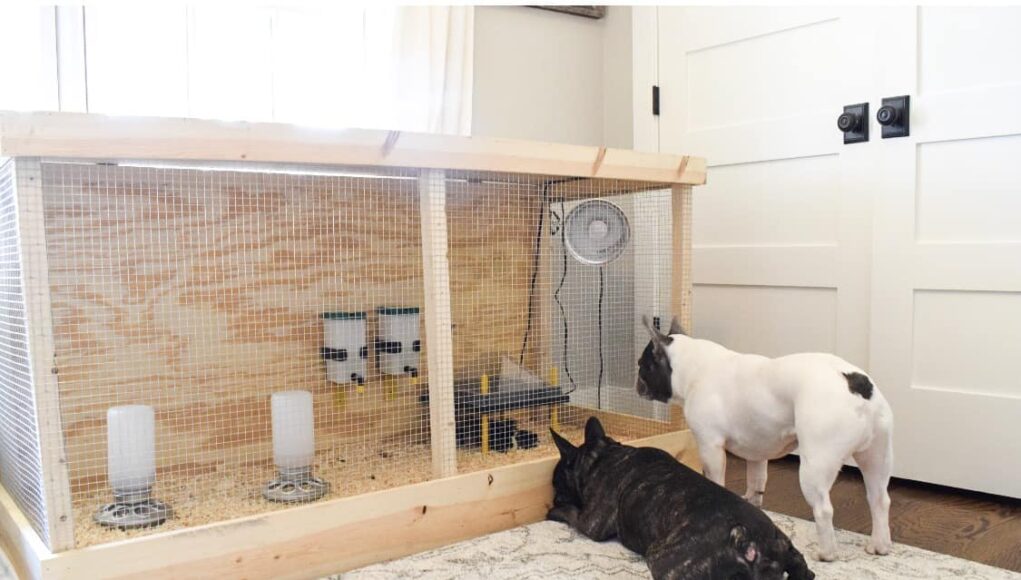Raising baby chicks can be a delightful experience for any chicken lover. Whether you’re a seasoned poultry enthusiast or a beginner, understanding how to care for chicks in a brooder is crucial to ensuring their healthy growth and development. A brooder is a heated enclosure that provides the perfect environment for baby chicks in their first few weeks of life. In this article, we will explore the best practices and essential tips to help you take care of your chicks in a brooder.

Setting Up the Brooder
Choosing the Right Location
The first step in caring for chicks is selecting an appropriate location for the brooder. Choose a quiet and draft-free area indoors, such as a garage or basement. Ensure the space is safe from predators and has a stable temperature.
Selecting the Brooder Container
The brooder container can be a cardboard box, plastic bin, or a specially designed brooder. The container should be spacious enough for the chicks to move around freely. Make sure the walls are high enough to prevent chicks from escaping.
Providing Heat and Light
Setting Up the Heat Source
Baby chicks require a warm environment to thrive. Use a heat lamp or a brooder plate to provide warmth. The ideal temperature is around 95F (35C) during the first week, and you can gradually decrease it by 5F each week.
Monitoring Temperature
Place a thermometer at chick level to monitor the temperature accurately. Ensure that the heat source is positioned safely to prevent overheating or burning. Adjust the height of the heat lamp as needed to maintain the desired temperature.
Feeding and Watering
Providing the Right Feed
Use a starter feed specifically formulated for chicks. This feed contains essential nutrients necessary for their growth. Fill a small feeder with the starter feed and ensure it’s accessible at all times.
Ensuring Fresh Water Supply
Provide clean and fresh water in a shallow dish or waterer. Chicks can easily drown, so make sure the water container is shallow enough. Change the water regularly to keep it clean and free from debris.
Maintaining Brooder Hygiene
Regular Cleaning of the Brooder
Maintaining cleanliness in the brooder is vital to prevent disease. Clean the brooder regularly by removing soiled bedding and droppings. You can find more tips on keeping feed dry in a brooder here.
Changing Bedding
Use absorbent bedding material like pine shavings or straw. Change the bedding frequently to keep the environment dry and odor-free. Learn how often to change brooder bedding here.
Socializing and Handling Chicks
Gentle Handling
Handling chicks gently and regularly helps them become accustomed to human interaction. Begin by placing your hand in the brooder and allowing them to approach you. Avoid sudden movements that may startle them.
Introducing Chicks to Each Other
If you’re introducing new chicks to an existing group, do so gradually. Monitor their interactions to ensure they are getting along well. Chicks are social creatures and benefit from companionship.
Monitoring Health and Growth
Observing Behavior
Pay attention to the chicks’ behavior and activity levels. Healthy chicks are active, alert, and curious. If you notice lethargy or any signs of illness, take prompt action to address the issue.
Checking for Signs of Illness
Look for symptoms such as sneezing, coughing, or diarrhea. If any chicks show signs of illness, isolate them from the group and consult a veterinarian for advice.
Transitioning Chicks to the Coop
Preparing for the Transition
When chicks are fully feathered, usually around 6 to 8 weeks old, they are ready to move to the coop. Gradually acclimate them to outdoor temperatures by reducing the heat in the brooder over time.
Introducing Chicks to the Coop
Ensure the coop is predator-proof and provides ample space for the growing chickens. Allow the chicks to explore their new environment during the day and gradually extend their time in the coop.
Additional Resources
For more information on setting up a brooder, visit this resource. Additionally, explore eco-friendly chick brooder options here.

Frequently Asked Questions
What temperature should a brooder be?
The brooder temperature should start at around 95F (35C) for the first week and decrease by 5F each week until the chicks are fully feathered.
How often should I clean the brooder?
Clean the brooder regularly by removing soiled bedding and droppings. Change the bedding frequently to maintain a clean environment.
When can chicks move to the coop?
Chicks can move to the coop when they are fully feathered, usually around 6 to 8 weeks old. Gradually acclimate them to outdoor temperatures before transitioning.
How do I prevent chicks from drowning in their water?
Use shallow water containers to prevent drowning. Ensure the waterer is stable and cannot be tipped over by the chicks.
This article contains affiliate links. We may earn a commission at no extra cost to you.











